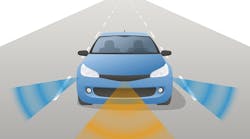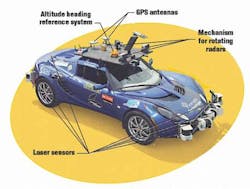The SAE International standard that defines the six levels of driving automation (J3016), a standard adopted by the U.S. Dept. of Transportation and the National Highway Traffic Safety Administration, celebrates its third birthday this month. Odds are the six levels of self-driving cars will become much more well known once higher-level self-driving cars are on the market.
So here are the six levels:
Level 0 (No automation): This is where the vast majority of cars and trucks are today. The driver handles steering, throttle, and braking (ST&B)monitoring the surroundings, as well as navigating, and determining when to use turn signals, change lanes, and turn. But there can be some warning systems (blind-spot and collision warnings).
Level 1 (Driver assistance): Vehicles in this level can handle S or T&B, but not in all circumstances, and the driver must be ready to take over those functions if called upon by the vehicle. That means the driver must remain aware of what the car is doing and be ready to step in if needed.
Level 2 (Partial assistance): The car handles ST&B, but immediately lets the driver take over if he detects objects and events the car is not responding to. In these first three levels, the driver is responsible for monitoring the surroundings, traffic, weather, and road conditions.
Level 4 (High automation): The car handles ST&B and monitoring the surroundings in a wider range of environments, but not all, such as severe weather. The driver switches on the automatic driving only when it is safe to do so. After that, the driver is not required.
Level 5 (Full automation): Driver only has to set the destination and start the car, the car handles all other tasks. The car can drive to any legal destination and make its own decisions on the way.
What year do you think car makers will have cars at each of the levels from 1 and above available to the public? Or will car makers hold off until Level 6 vehicles can be put on the road?
This blog post originally appeared on Machine Design. Machine Design is, like IndustryWeek, powered by Penton, an information services company.




